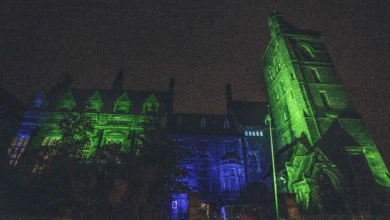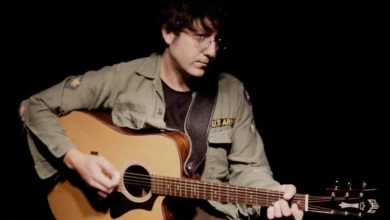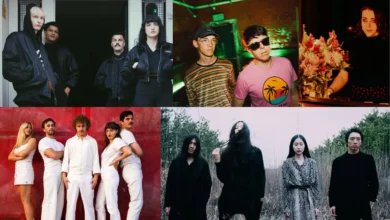
Liverpool Biennial 2021 ‘The Outside Chapter’ Preview
Liverpool Biennial 2021 to open first chapter of The Stomach and the Port on 20 March with major series of outdoor sculpture, sonic and digital commissions, alongside the new Biennial Online Portal.
Liverpool Biennial The Outside Chapter
The 11th edition of Liverpool Biennial will open the first ‘outside’ chapter of The Stomach and the Port on 20 March 2021, starting with a major new series of outdoor sculpture, sonic and digital commissions by 9 different artists, alongside the new Biennial Online Portal. To align with government guidelines, the second ‘inside’ chapter will launch the full festival of exhibitions and events hosted by key venues throughout Liverpool in late Spring.
The Stomach and the Port (20 March to 6 June) is curated by Manuela Moscoso and will showcase the work of 50 leading, and emerging, artists and collectives from 30 countries around the world, including 47 new commissions for the Liverpool Biennial.
Exploring concepts of the body, the Biennial draws on non-Western thinking that challenges our understanding of the individual as a defined, self-sufficient, entity. Instead, the body is seen as fluid, being continuously shaped by, and actively shaping its environment. The central point of these queries is Liverpool: a city which was an active agent in the process of modernisation and change but which also played a role in the foundation of colonialism. Through the visible and invisible dynamics of Liverpool’s historic port, this Biennial envisions different forms of being human and explores what bodies have the potential to be.
The ‘outside’ chapter brings together the exterior elements of the Biennial. New sculptures and installations located at strategic outdoor sites across Liverpool will celebrate the city centre’s iconic architecture and public spaces. The works connect bodies and experiences to key places, past and present, speaking of the movement of humans across the sea and proposing new understandings of the relationships between the body and nature. In addition, 3 dynamic new sonic and digital commissions will be launched on the Biennial Online Portal for the duration of the Biennial.
‘Outside’ Chapter – Outdoor Sculpture, Installations, Sonic and Digital Commissions
Larry Achiampong’s Pan African Flags For the Relic Travellers’ Alliance forms part of Relic Traveller, a multi-disciplinary project that builds upon a postcolonial perspective. Displayed across 10 sites within the city centre, the series of flags will comprise the original set of 4, with each design featuring 54 stars to represent the 54 countries of Africa, along with a new set to be shown for the 2021 Biennial. Symbolically, they highlight Pan African and diasporic identity, while the colours green, black and red reflect the land, its people and the struggles the continent has endured, respectively. The field of yellow gold represents a new day and prosperity.
Rashid Johnson’s large-scale sculpture Stacked Heads (2020) at Canning Dock Quayside is formed with two distinct head parts in the style of a totem. Made from bronze and furnished with yucca and cacti plants, the work takes inspiration from his series of drawings Anxious Men (2015-ongoing). Selected for their endurance to harsh winds and saline water, the plants resilience and the work’s waterfront location negotiates Liverpool’s transatlantic histories while keeping prescient contemporary concerns at its core.
A major new billboard by Linder, located within the Liverpool ONE, will form part of her Bower of Bliss (2021) constellation that has its origins in a copy of Oz magazine, which she bought at the Bickershaw Festival in 1972. The centuries old phrase “Bower of Bliss” refers to the birthplace, the point of origin and safety. For the poet Edmund Spenser, the “Bower of Bliss” meant “womb”. For Linder, the connotations link back to her experience of being carried in her mother’s womb in Liverpool in 1954 and her billboard presents the “Bower of Bliss” as a safe, deeply pleasurable space, needed now more than ever.
On the side of Bluecoat, Jorgge Menna Barreto’s Mauvais Alphabet (2021) has been made in collaboration with students from Liverpool John Moores University and local mural artist, Anna Jane Houghton. Documenting weeds and wild edibles found in Liverpool, Barreto presents the types of plant that thrive naturally in local conditions as our associate, rather than product. Through eating and foraging locally, we can learn more about the place we inhabit and the local stories which are read not necessarily by the brain but by the stomach.
Osteoclast (I do not know how I came to be on board this ship, this navel of my ark) (2021) by Teresa Solar is composed of five kayaks, each sculpture reflecting the shape of a human bone. Positioned outside Exchange Flags, it is anchored on the maritime history of Liverpool, the installation draws parallels between bones – carriers of tissues, veins and cell communities, message pathways – and vessels, vehicles of migration, transmitters and connectors of bodies and knowledge.
At Crown Street Park, La Pensée Férale (2021) by Daniel Steegmann Mangrané features a replica of a Pau Rei, a native tree of the Brazilian Mata Atlántica, imbedded with the eye of an Indian pariah dog from Bangladesh, and surrounded by newly planted Fagus Purpurea Pendula trees. Mangrané’s installations query humanity’s position in the world – eroding the Western conceptions of being which separate the world into opposing dualisms, such as nature and culture. La Pensée Férale raises questions about subjectivity as a cultural construction as well as our attitude towards the environment, reinforcing that nature is not without perception or feeling.
The Biennial Online Portal
The Biennial Online Portal will underpin the physical festival, introducing each artist taking part in tandem with an exploration of the broader entry points to The Stomach and the Port. Gathering the artists practices under three ideas, the entry points – stomach, porosity and kin – present different ways of thinking about and linking the artworks across the Biennial. The stomach is the bodily organ through which we engage with and digest the world; porosity is the ability of the skin to absorb or allow things to pass through; and kin revisits the bonds and relationships which connect us to the world.
For more information visit https://www.biennial.com/







